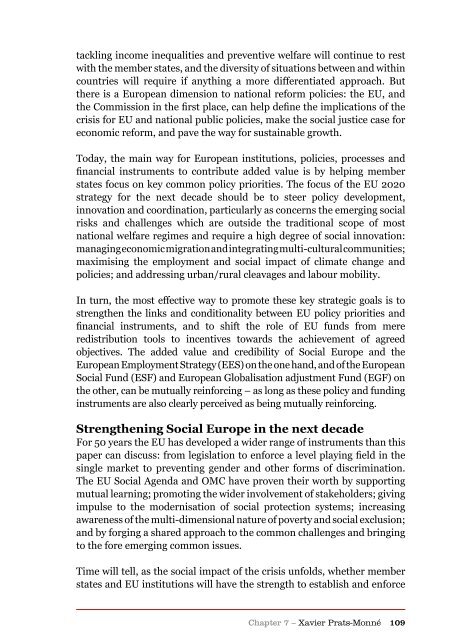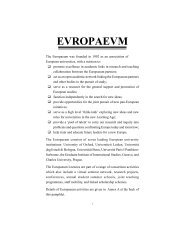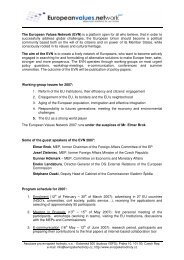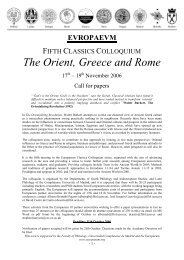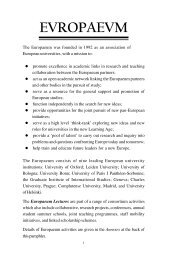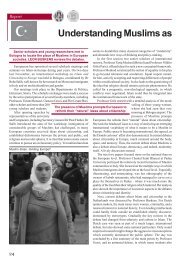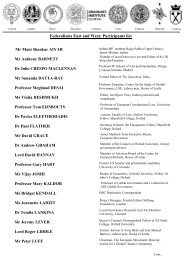Authors Iain Begg | Gabriel Glöckler | Anke Hassel ... - The Europaeum
Authors Iain Begg | Gabriel Glöckler | Anke Hassel ... - The Europaeum
Authors Iain Begg | Gabriel Glöckler | Anke Hassel ... - The Europaeum
You also want an ePaper? Increase the reach of your titles
YUMPU automatically turns print PDFs into web optimized ePapers that Google loves.
tackling income inequalities and preventive welfare will continue to rest<br />
with the member states, and the diversity of situations between and within<br />
countries will require if anything a more differentiated approach. But<br />
there is a European dimension to national reform policies: the EU, and<br />
the Commission in the first place, can help define the implications of the<br />
crisis for EU and national public policies, make the social justice case for<br />
economic reform, and pave the way for sustainable growth.<br />
Today, the main way for European institutions, policies, processes and<br />
financial instruments to contribute added value is by helping member<br />
states focus on key common policy priorities. <strong>The</strong> focus of the EU 2020<br />
strategy for the next decade should be to steer policy development,<br />
innovation and coordination, particularly as concerns the emerging social<br />
risks and challenges which are outside the traditional scope of most<br />
national welfare regimes and require a high degree of social innovation:<br />
managing economic migration and integrating multi-cultural communities;<br />
maximising the employment and social impact of climate change and<br />
policies; and addressing urban/rural cleavages and labour mobility.<br />
In turn, the most effective way to promote these key strategic goals is to<br />
strengthen the links and conditionality between EU policy priorities and<br />
financial instruments, and to shift the role of EU funds from mere<br />
redistribution tools to incentives towards the achievement of agreed<br />
objectives. <strong>The</strong> added value and credibility of Social Europe and the<br />
European Employment Strategy (EES) on the one hand, and of the European<br />
Social Fund (ESF) and European Globalisation adjustment Fund (EGF) on<br />
the other, can be mutually reinforcing – as long as these policy and funding<br />
instruments are also clearly perceived as being mutually reinforcing.<br />
Strengthening Social Europe in the next decade<br />
For 50 years the EU has developed a wider range of instruments than this<br />
paper can discuss: from legislation to enforce a level playing field in the<br />
single market to preventing gender and other forms of discrimination.<br />
<strong>The</strong> EU Social Agenda and OMC have proven their worth by supporting<br />
mutual learning; promoting the wider involvement of stakeholders; giving<br />
impulse to the modernisation of social protection systems; increasing<br />
awareness of the multi-dimensional nature of poverty and social exclusion;<br />
and by forging a shared approach to the common challenges and bringing<br />
to the fore emerging common issues.<br />
Time will tell, as the social impact of the crisis unfolds, whether member<br />
states and EU institutions will have the strength to establish and enforce<br />
Chapter 7 – Xavier Prats-Monné 109


